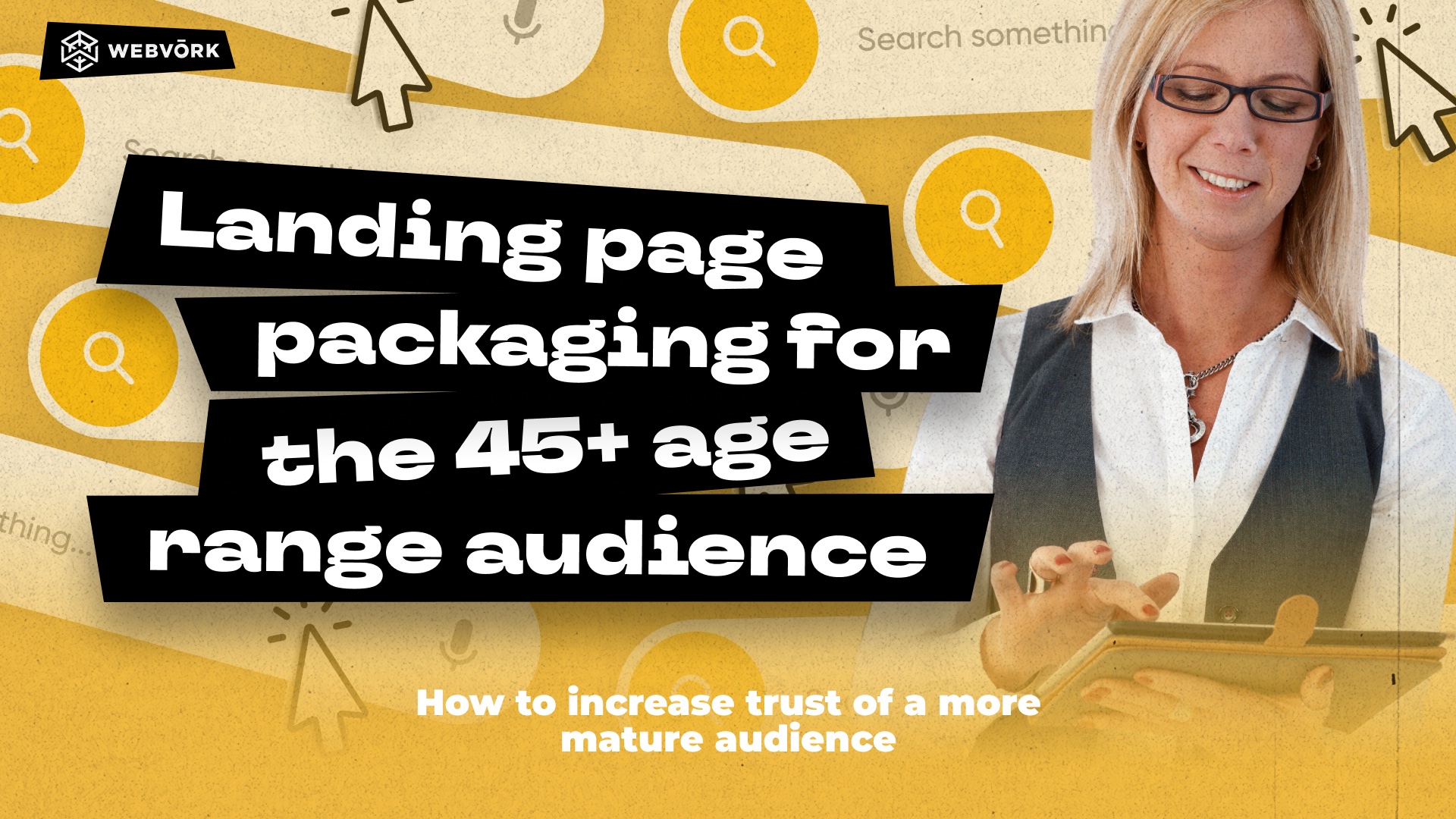Landing page packaging for the 45+ age range audience: how to increase trust of a more mature audience

If you think that the 45+ audience includes “seniors who don’t know how to use a smartphone,” then forget it. In Europe, these are self-confident, solvent people who have already seen enough marketing tricks and are excellent at filtering everything that comes into their field of vision. They know how to google, read ingredients, compare prices, and they certainly won’t fall for promises claiming “100% cured in three days.”
You need to talk to them differently — in an honest, calm, and respectful way. What wins here is not flashy design or aggressive triggers, but packaging that immediately inspires, “This is safe. This is for me. This can be trusted.”
What hooks people of 45+ y.o. in Europe
First of all, let’s be honest: they already have their own habits. Some people take vitamins they get at the pharmacy, some only take what their doctor or friend recommended, and some take proven dietary supplements ever since they were young people. To get them out of this comfort zone, you will have to show that your product is not just another jar of pills, but a well-thought-out solution with a clear effect.
How this works on a landing page:
– Clear and to the point: what your offer is, who it’s for, and why they need it. No “magical properties” — just specifics.
– Transparency — the ingredients, contraindications, instructions, and dosage are in plain sight, not hidden in the website footer.
– A simple, logical path from the landing page to your application form. No quests to find it and no guessing where to click.”
Important details
Europeans of 45+ years old love facts, but do not like to drown in medical essays. Give them a short and clear explanation of why your product works.
Reviews — they have worked and will always work and increase conversion. You can use photos, names, age, text according to the classics. But according to statistics, video works better. You can put together a video with a lecture from a doctor (just don’t use real famous people) or customer reviews. You can practice and generate high-quality deepfakes yourself or outsource this task to a pro.
And, of course, don’t forget the trust elements:
– certificates (GMP, ISO, local medical registries)
– research and comparisons with well-known analogues
– logos of pharmacies or medical centers
– phrases like “approved by the medical association”
Design
Minimalism works best here.
– The font is large and legible — 16–18 px at least.
– High contrast, large buttons, text not smeared on the background.
– The mobile version must be as simple as possible: large buttons, no micro fonts or “lost” forms.
Visually, it is better to use warm, but not acidic colors — especially for Southern Europe. For Germany, Austria and Switzerland, it can be a little stricter: neat shades, structured blocks, a sense of “officiality”.
Europe is very different:
Germany, Austria, Switzerland love detailed descriptions and evidence. Landing pages with detailed blocks, links to certificates and explanations of how the works are popular here.
Italy, Spain, Portugal respond to emotions and visual warmth, but trust is still built on facts.
Eastern Europe — use attention to price, payment terms, and state the delivery method, while it is better to use the local language.
Where to get inspiration outside of spying services
1. Branded websites and online pharmacies
iHerb, Vitacost, Nature Made — look at how they package the product page: simple structure, clear icons, emphasis on trust.
European online pharmacies: DocMorris (Germany), Farmacia Loreto (Italy) — they have well-honed UX for the age audience.
2. Behance and Dribbble
Type in “supplement landing page”, “healthcare UI” or “wellness website” — designers show modern trends and fresh presentation techniques there.
3. Promo pages in e-commerce
Amazon Best Sellers (Health & Household) — study how sellers arrange photos, infographics and reviews.
Shopify Themes Marketplace — the Health & Beauty section gives a lot of ideas for blocks.
4. Crowdfunding platforms
Kickstarter and Indiegogo in the Health and Fitness categories. The authors of the projects have very strong arguments and storytelling — they often present the product in such a way that even without discounts you want to buy it.
5. Media about health
WebMD, Mayo Clinic, Healthline — not as a source of design, but as an example of presenting information to a distrustful audience. You can take the structure of their info blocks with explanations from there.
6. Local brands in your GEO
Type “buy dietary supplements + [country]” into Google and see how local manufacturers design their pages. This is especially useful if you are targeting Germany, Scandinavia or Southern Europe — they design landing pages based on cultural habits.
Sometimes it is useful to get inspiration from other niches altogether — for example, the premium segment of cosmetics or wine brands. They work with the image of “trust through style” in the same way as we need for 45+ in nutra.
How to use these resources
Take screenshots of key blocks: hero, trust signals, CTA buttons, reviews, design of the list of ingredients.
Compare different styles — from the industrial German neatness to the more emotional Southern European approach.
Adapt ideas: colors, fonts, icons, visual logic can be transferred to offers.
To conclude,
Working with the 45+ audience in Europe is not about adding more text or tossing in some discounts. This is about being able to speak their language, understand doubts, and give the thrust they value. Don’t limit yourself to just using spying services — take ideas from everywhere: pharmacies, design websites, Amazon, and even Kickstarter.
The main thing is not to copy word for word, but to adapt them to your offer, GEO, and tone of voice. As a result, you won’t get just “another nutra landing,” but a page that people will go to, read, and get their bank card out.